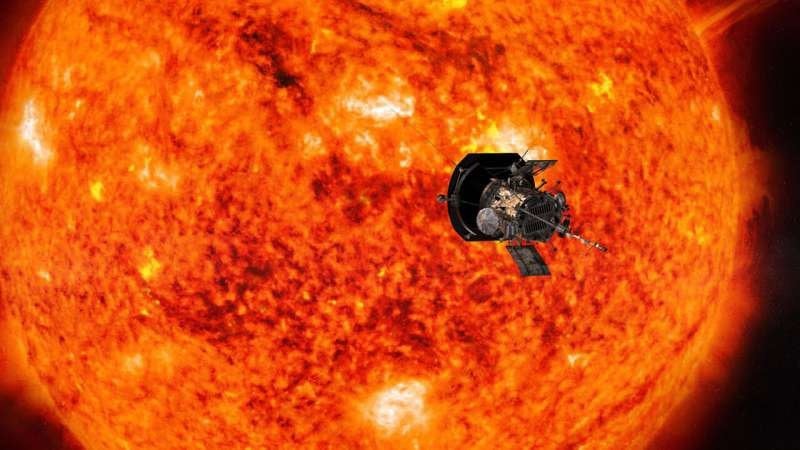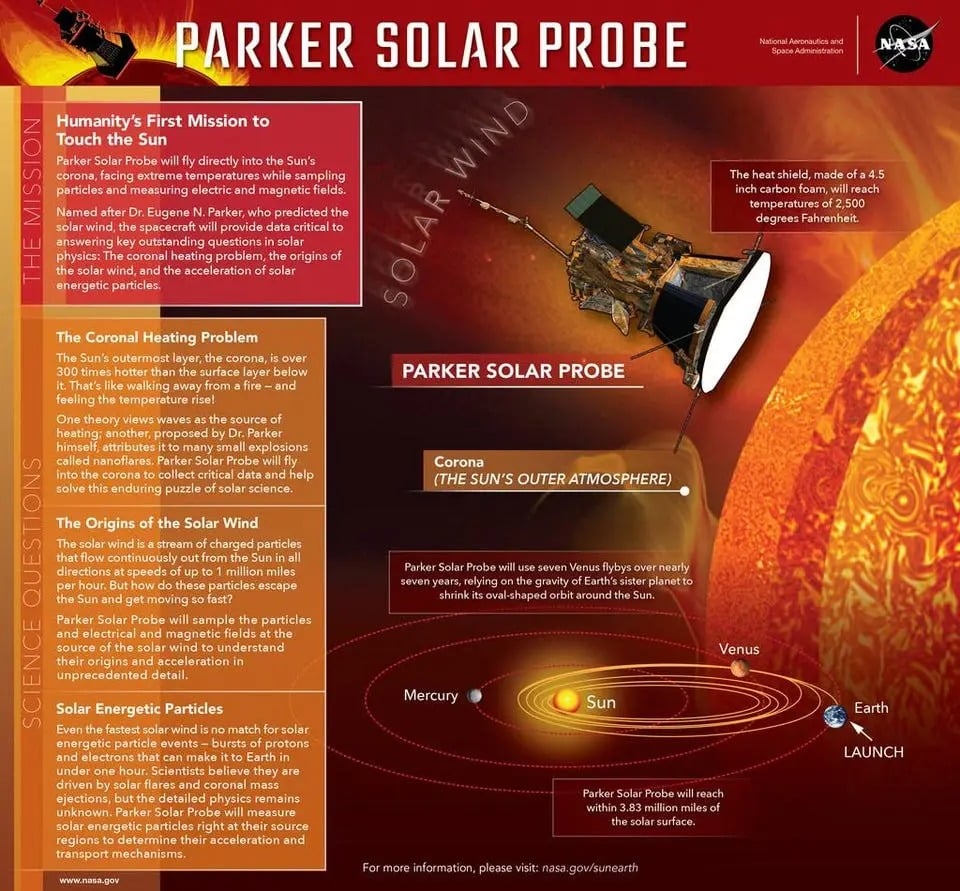
On December 14, 2021, NASA officials revealed that the Parker Solar Probe had successfully pierced through the Sun's outer atmosphere — the corona — and "touched" the star. The historical feat was achieved on April 28, 2021, during the spacecraft's eighth flyby, when it was about 8.1 million miles away from the star. The space probe spent five hours collecting magnetic and solar particle data from the Alfvén critical surface — the point that marks the end of the Sun's atmosphere.
"Parker Solar Probe "touching the Sun" is a monumental moment for solar science and a truly remarkable feat," said Thomas Zurbuchen, the associate administrator for the Science Mission Directorate at NASA headquarters in Washington. "Not only does this milestone provide us with deeper insights into our Sun's evolution and its impacts on our solar system, but everything we learn about our own star also teaches us more about stars in the rest of the universe."
A few days after announcing the groundbreaking flyby, NASA released close-up footage of coronal streamers captured by the Parker Solar Probe during its ninth flyby of the Sun in August 2021. The structures, which appear as flashing lights moving upward and downward in the video, have previously only been observed from great distances. The video also captured a string of planets. While NASA has yet to identify them, some experts believe they are Mercury, Mars, Jupiter, Saturn, Venus, and Earth.
And the Solar Probe is just getting started. The spacecraft is expected to get increasingly closer to the Sun in subsequent flybys. If all goes according to plan, sometime in 2024, the satellite will get to within 3.83 million miles of the Sun's surface, closer than any previous spacecraft dispatched to study the star. The success of humanity's first-ever attempt into the Sun's corona is dependent on the space probe's heat shield its temperature-sensitive instruments at a comfortable 85 degrees Fahrenheit (30 degrees Celsius). So far, it appears to be doing fine!

The extensive information collected will enable scientists to learn how the corona can achieve temperatures as high as 27 million degrees Fahrenheit (about 15 million degrees Celsius). It will also provide insights into the reason for solar winds and solar flares, both of which can severely impact space travel, human-made satellites, and If strong enough, even life on Earth.
Resources: NASA.gov, Space.com, Newscientist.com
